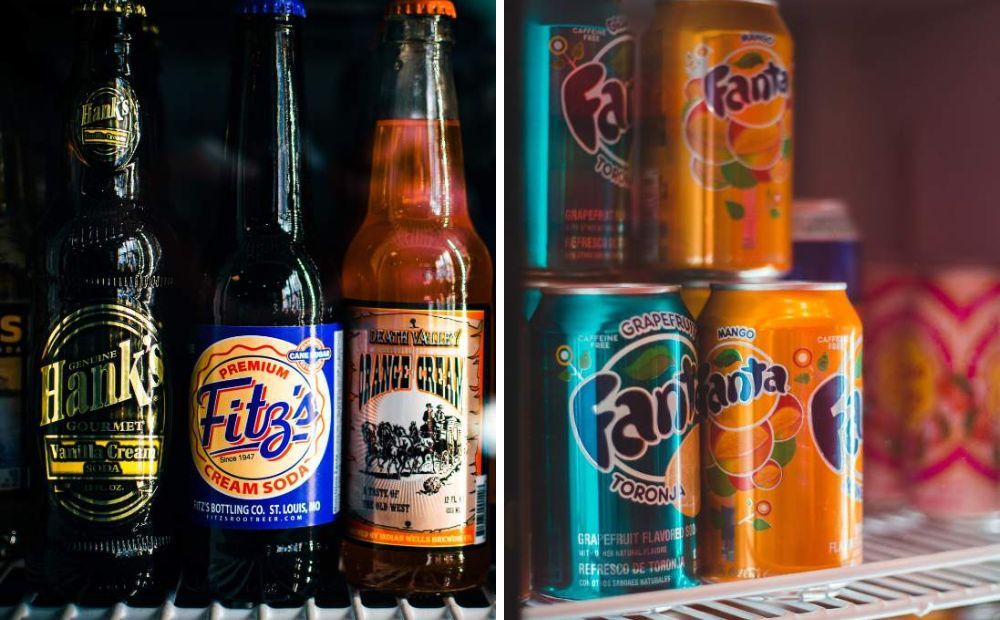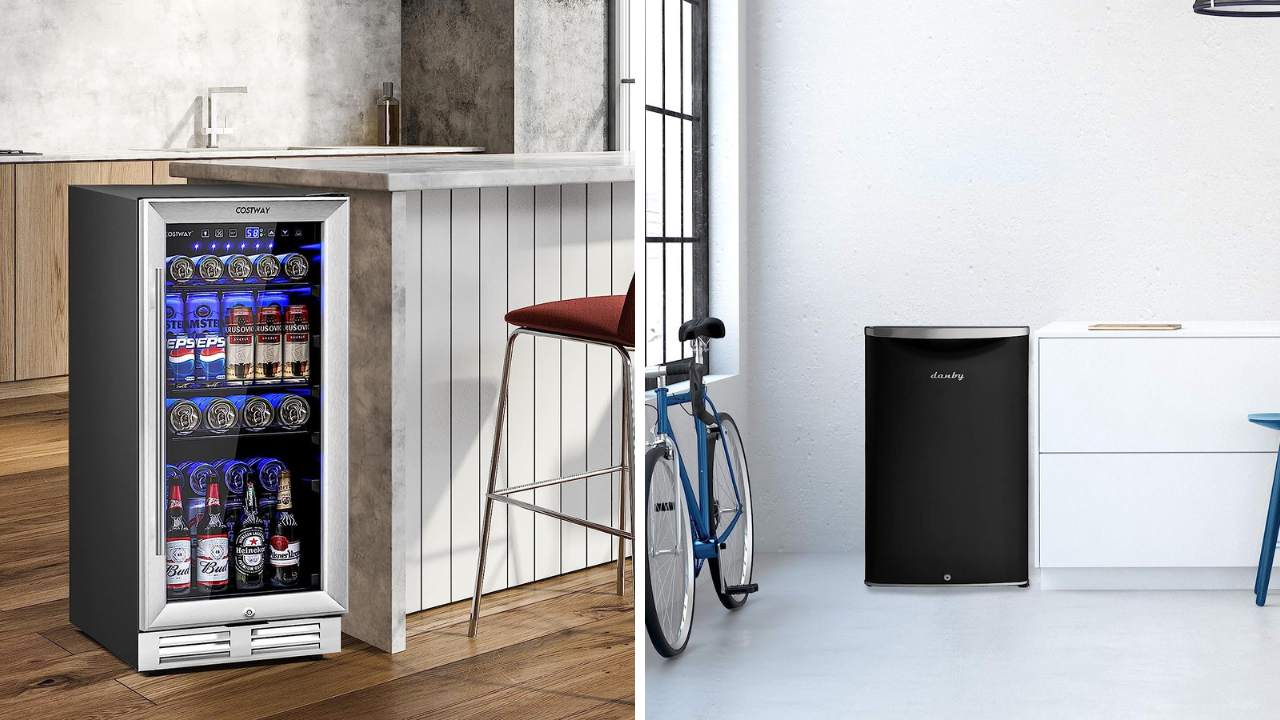Have you ever reached for a cold drink in your mini fridge, only to find it lukewarm? Or perhaps you've noticed your snacks aren't as fresh as they should be. If so, you're not alone.
Many people struggle with their mini fridges not being cold enough. But don't worry, this guide is here to help you understand how to make a mini fridge colder.
By following the tips and tricks outlined in this article, you can ensure your mini refrigerator is always at the optimal temperature, keeping your food and beverages perfectly chilled.

Mini Beverage Fridges
Understanding Your Mini Fridge
Before we dive into the solutions, it's important to understand how a mini fridge or compact fridge works.
A compact fridge operates on the same basic principles as a regular fridge. It uses a refrigerant, a substance that absorbs and releases heat, to cool the inside of the fridge.
This process is controlled by the thermostat, which regulates the temperature inside the fridge by turning the cooling system on and off.
Importance of Proper Thermostat Settings
Consistent temperature is a must for food safety. Fluctuating temperatures cause condensation inside the fridge.
This can lead to bacteria and mold, which can contaminate food and create a health risk. Setting the temperature correctly prevents this.
The thermostat is a crucial component of your compact fridge. It's usually a dial that ranges from 1 to 5 or 1 to 7, with 1 being the warmest setting and 5 or 7 being the coldest.
If your mini refrigerator isn't cold enough, the first thing you should check is the thermostat setting. It might be set too high, causing the fridge to be warmer than necessary.
To ensure it's running optimally, check and adjust the thermostat settings regularly. Inadequate or excessive cooling can affect the freshness and lifespan of your food items. Follow these 6 steps to effectively check and adjust the settings:
- Locate the thermostat dial, usually inside the refrigerator.
- Turn the dial to its coldest setting and wait a few hours.
- Check if the temperature has dropped enough.
- If not, gradually turn the dial towards warmer settings and monitor the changes in temperature.
- Once you find an optimal temperature, leave the dial at that position.
- Readjust the thermostat settings based on seasonal changes or specific cooling needs.
Furthermore, consider external factors like room temperature, sunlight exposure, and airflow when setting the thermostat.
The ideal temperature range for most mini refrigerators is between 34°F (1°C) and 40°F (4°C). Cluttered shelves or blocked vents can cause uneven cooling.
For more detailed information on how a compact fridge works, check out this comprehensive guide on Understanding Your Mini Fridge.


Mini refrigerator at the right temperature
Positioning Your Mini Fridge
The position of your mini fridge can greatly affect its cooling efficiency. It's crucial to place your mini fridge in a location that allows for optimal cooling.
This means keeping it away from heat sources such as direct sunlight, ovens, or heaters.
These heat sources can cause your compact fridge to work harder to maintain a cool temperature, which can lead to increased energy consumption and a shorter lifespan for your fridge.
Furthermore, ensure there is enough space around your mini refrigerator for air to circulate.
This helps dissipate the heat generated by the fridge's motor, allowing it to cool more efficiently.
For more tips on positioning your compact fridge, check out this article on Proper Usage of Your Mini Fridge.
Proper Usage of Your Mini Fridge
Proper usage of your mini fridge can also contribute to its cooling efficiency. Here are some tips to keep in mind:
- Avoid overfilling the fridge. While it might be tempting to pack your compact fridge to the brim, doing so can restrict airflow and make it harder for the fridge to maintain a cool temperature. Try to leave some space between items to allow for better air circulation.
- Let food cool before adding it to the fridge. Adding hot food or drinks to your compact fridge can raise the internal temperature, forcing the fridge to work harder to cool down. Always let food cool to room temperature before storing it in the fridge.
- Minimize the frequency of opening the fridge. Every time you open the fridge, warm air enters and cold air escapes. This means the fridge has to work harder to bring the temperature back down. Try to minimize the number of times you open the fridge by thinking about what you need before opening the door.
Maintenance Tips for Your Mini Fridge
Maintaining your mini fridge is just as important as using it correctly. Here are some maintenance tips to keep your mini fridge running efficiently:
- Check the power supply and make sure that the fridge is working: this may seem like an obvious first step but it needs to be mentioned as it gets overlooked. cold air
- Regular cleaning and defrosting: Over time, dust and grime can accumulate on the coils of your mini fridge, reducing its efficiency. Regularly cleaning the coils can help your fridge cool more effectively. Additionally, if your mini fridge isn't frost-free, you'll need to defrost it periodically to prevent ice buildup, which can reduce the fridge's cooling capacity.
- Checking Vents: Look inside and outside the mini fridge for any blockages. Blocked vents stop air from flowing, which can cause overheating. Clear away anything blocking the vents.
- Checking and replacing seals if necessary: The seals or door gaskets on your mini fridge door ensure that cold air stays in and warm air stays out. If the door gaskets are damaged or worn out, your fridge will have to work harder to maintain a cool temperature. Regularly check the seals for any signs of damage and replace them if necessary.
Review - Danby DBC120BLS Mini Refrigerator and How to Make it Colder - DIY Maker Dan
FAQs
Here are some frequently asked questions about how to make mini fridges:
Is 1 or 5 the coldest setting on a mini fridge?
In most mini refrigerators, 1 is the warmest setting and 5 is the coldest. However, this can vary depending on the model, so it's best to check your fridge's manual.
Is 1 or 6 the coldest setting on a mini fridge?
Similar to the above, in most mini fridges, 1 is the warmest setting and 6 is the coldest. Again, check your fridge's manual to be sure.
Can you make a mini fridge cold enough to be a freezer?
While some mini fridges come with a small freezer compartment, it's generally not possible to make the entire fridge cold enough to act as a freezer. Attempting to do so could damage the fridge's motor.
Why is my mini fridge not getting cold?
There could be several reasons why your mini fridge isn't getting cold. It could be due to a problem with the thermostat, the fridge being overfilled, or the fridge being placed too close to a heat source. If you've checked all these factors and your fridge still isn't cooling, it might be time to call a professional.
In need of a mini fridge with a lock for a little extra security? Check out our blog post on the Best Mini Fridge With Lock to Secure Your Food and Drinks.

Making your mini fridge colder involves understanding how it works, positioning it correctly, using it properly, and maintaining it regularly.
Remember to check the thermostat settings, avoid placing your fridge near heat sources, refrain from overfilling it, let food cool before storing, and keep the fridge clean and well-maintained.
By following these tips, you can ensure your mini fridge operates at its best, keeping your food and beverages perfectly chilled.










